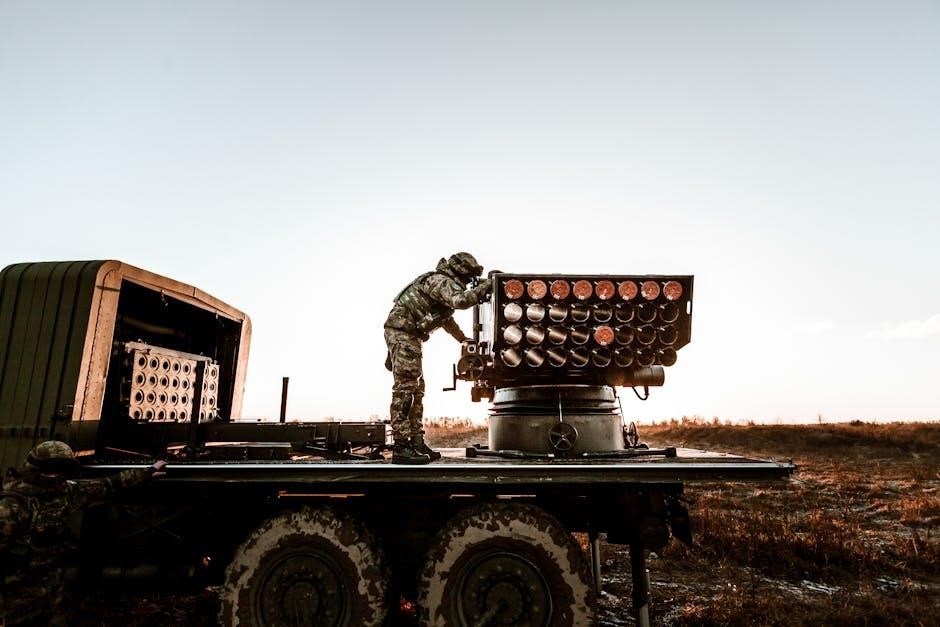The Battle of the Sexes Questions PDF is a engaging resource designed to explore gender stereotypes and societal expectations through trivia and survey-style questions.
It provides a fun and educational way to foster cross-gender understanding, drawing inspiration from historical events like the 1973 tennis match between Billie Jean King and Bobby Riggs.
The document is structured to include diverse question types, ensuring balanced participation and thought-provoking discussions, making it ideal for social gatherings or educational settings.
1.1 Historical Context of the Battle of the Sexes
The Battle of the Sexes has roots in the 1973 tennis match between Billie Jean King and Bobby Riggs, symbolizing the broader struggle against gender stereotypes in sports and society.
This iconic event challenged perceptions of male dominance, inspiring conversations about equality and representation. The PDF questionnaire draws from this historical backdrop, using trivia and survey questions to explore evolving gender dynamics.
By referencing this landmark moment, the resource encourages reflection on how gender roles have shaped cultural and social interactions over time, fostering a deeper understanding of the ongoing “battle of the sexes” in modern contexts.
1.2 Purpose of the Questionnaire
The Battle of the Sexes Questions PDF aims to foster engaging discussions and challenge gender stereotypes through a mix of trivia, surveys, and debate topics.
Its primary goal is to encourage cross-gender understanding by exploring societal expectations and personal perceptions in a fun, interactive format.
By addressing life satisfaction, work-life balance, and entertainment-focused questions, the questionnaire serves as both an educational tool and a catalyst for social engagement, promoting dialogue on equality and collaboration.
1.3 Structure of the PDF Document
The Battle of the Sexes Questions PDF is organized into clear sections, featuring a variety of question types to suit different preferences and knowledge levels.
It includes trivia questions on gender stereotypes, surveys about life satisfaction, debate topics on work-life balance, and fun, entertainment-focused queries.
The document is designed for easy navigation, with structured formatting and clear instructions to ensure maximum engagement and participation.
Additionally, it provides scoring guides and tips for hosting the quiz, making it a comprehensive resource for both entertainment and educational purposes.

The 1973 Tennis Match and Its Significance
The 1973 tennis match between Billie Jean King and Bobby Riggs became a cultural phenomenon, symbolizing the battle for gender equality and challenging stereotypes in sports.
Known as the “Battle of the Sexes,” it drew massive attention and remains a landmark event in the fight for women’s rights and recognition in athletics.
2.1 Billie Jean King vs. Bobby Riggs
The 1973 tennis match between Billie Jean King and Bobby Riggs was a landmark event, symbolizing the broader struggle for gender equality in sports and society;
King, a trailblazing female athlete, defeated Riggs, a self-proclaimed male chauvinist, in straight sets, proving women’s capability in competitive athletics and challenging deeply rooted stereotypes.
This historic victory not only elevated King’s status as a tennis icon but also inspired future generations to advocate for gender equality in sports and beyond.
The match remains a powerful symbol of the “Battle of the Sexes,” continuing to influence discussions on gender roles and empowerment.
2.2 Impact on Gender Stereotypes in Sports
The 1973 match between Billie Jean King and Bobby Riggs profoundly challenged gender stereotypes in sports, demonstrating women’s athletic capabilities on a global stage.
King’s victory not only shattered perceptions of male superiority but also inspired a generation of female athletes, paving the way for greater equality in sports.
The event sparked widespread media attention, fostering conversations about gender roles and encouraging societal shifts in how women’s sports were perceived and supported.
It also led to increased opportunities for women in athletics, contributing to the passage of Title IX and the growth of women’s professional sports leagues.
Ultimately, the match became a cultural milestone, redefining expectations and empowering women to break barriers in sports and beyond.

2.3 Legacy of the Match in Modern Culture
The 1973 Battle of the Sexes match remains a cultural touchstone, symbolizing the fight for gender equality and inspiring future generations of female athletes and advocates.
Its impact is evident in modern media, with films and documentaries retracing the event, ensuring its relevance in contemporary discussions about gender roles and sports.
The match continues to influence conversations about women’s rights, challenging stereotypes and celebrating female achievements in athletics and beyond.
Its legacy endures as a powerful reminder of the importance of equality and the transformative power of sports in shaping societal attitudes.

Types of Questions Included in the PDF
The PDF features trivia questions on gender stereotypes, surveys about life satisfaction, debate topics on work-life balance, and fun, entertainment-focused queries to engage participants.
3.1 Trivia Questions on Gender Stereotypes
The trivia questions on gender stereotypes are crafted to provoke thought and challenge common perceptions about traditional roles and societal expectations of men and women.
These questions cover a range of topics, from historical gender norms to modern-day biases, encouraging participants to reflect on how stereotypes influence daily life and interactions.
By addressing these themes in a playful yet insightful manner, the quiz fosters a deeper understanding of gender dynamics and promotes open discussions about equality and representation.
3.2 Survey Questions About Life Satisfaction
The survey questions about life satisfaction are designed to explore how individuals perceive their overall contentment and fulfillment in life.
These questions delve into various aspects, including work-life balance, personal achievements, and relationships, while encouraging participants to reflect on societal expectations.
By comparing responses across genders, the survey highlights differences and similarities, fostering discussions on how gender roles influence life satisfaction and personal growth.
This section of the PDF provides valuable insights into the interconnectedness of gender stereotypes and individual well-being, making it a key component of the quiz.
3.3 Debate Questions on Work-Life Balance
The debate questions on work-life balance encourage participants to discuss and compare perspectives on how gender influences professional and personal responsibilities;
These questions explore societal expectations, career sacrifices, and the division of household duties, prompting insightful conversations about equality and fairness.
By fostering open dialogue, this section of the quiz helps participants understand the challenges and opportunities faced by different genders in achieving a balanced lifestyle.
It also highlights how historical and cultural factors shape modern attitudes toward work and family life, promoting empathy and mutual understanding among participants.
3.4 Fun and Entertainment-Focused Questions
The fun and entertainment-focused questions in the PDF are designed to lighten the mood and encourage playful competition between participants.
These questions cover pop culture, trivia, and light-hearted topics, allowing participants to showcase their knowledge of the opposite gender’s interests and stereotypes.
They include quizzes about music, movies, and hobbies, making the experience enjoyable and engaging while still fostering cross-gender understanding.
Such questions help create a relaxed atmosphere, ensuring the quiz remains entertaining and accessible for all participants.

Designing the Battle of the Sexes Quiz
Designing the quiz involves selecting diverse topics, ensuring gender balance, and crafting engaging questions to foster fun and thought-provoking discussions.
The structure emphasizes clarity and variety, making it appealing for both participants and facilitators to create an inclusive and entertaining experience.
4.1 Choosing Topics for Questions
Selecting topics involves identifying relevant and engaging subjects that cater to both genders, ensuring a mix of trivia, surveys, and debates to maintain interest and inclusivity;
Questions are often drawn from pop culture, sports, and lifestyle, designed to challenge stereotypes and encourage cross-gender understanding while keeping the quiz entertaining and educational.
Ensuring a balanced approach guarantees diverse participation, making the quiz suitable for various audiences and settings, from casual gatherings to structured educational environments.

4.2 Ensuring Balance Between Genders
Creating a balanced quiz involves distributing questions equally to cater to both male and female perspectives, ensuring no gender is overrepresented or marginalized.
Topics are selected to avoid stereotypes, fostering fairness and inclusivity, while maintaining engaging and relevant content for all participants.
This approach ensures the quiz remains educational and entertaining, promoting cross-gender understanding and encouraging active involvement from everyone.
4.3 Creating Engaging and Thought-Provoking Queries
Engaging questions are crafted to provoke critical thinking and spark discussions, blending trivia with deeper insights into gender roles and societal norms.

By incorporating diverse topics, from pop culture to historical events, the quiz ensures relevance and appeal to a broad audience, fostering an interactive learning experience.
Each query is designed to challenge stereotypes and encourage participants to reflect on their perceptions, making the quiz both entertaining and intellectually stimulating.
4.4 Formatting the Quiz for Maximum Engagement
Effective formatting enhances the quiz experience, ensuring clarity and visual appeal. Clear instructions and categorized questions help participants navigate effortlessly, while a balanced mix of question types maintains interest.
Using bold headers, bullet points, and numbered lists organizes content, making it easy to follow. Incorporating visuals and humor adds entertainment value, keeping the atmosphere lively and engaging.
A well-designed scoreboard and scoring system fosters friendly competition, encouraging active participation and teamwork. These elements collectively create an immersive and enjoyable experience for all involved.

The Role of Game Theory in the Battle of the Sexes
Game theory explains strategic decision-making in competitive scenarios, like the Battle of the Sexes quiz, by analyzing choices and predicting outcomes based on rational behavior.
5.1 Nash Equilibria in the Context of Gender Competitions
Nash equilibria, a game theory concept, describe scenarios where no player can benefit by changing their strategy while others keep theirs unchanged. In gender competitions, this concept applies to strategic decision-making, where participants anticipate each other’s choices. For instance, in the Battle of the Sexes quiz, questions are designed to reflect Nash equilibria, ensuring balanced and fair outcomes. This approach fosters engagement by encouraging players to align their answers with expected responses, promoting a competitive yet equitable environment. The quiz leverages this principle to explore gender stereotypes and societal expectations through strategic interactions. This makes the game both intellectually stimulating and socially insightful.
5.2 Strategic Decision-Making in the Quiz Format
The Battle of the Sexes quiz incorporates strategic decision-making by challenging participants to anticipate and align their answers with societal expectations. Questions are crafted to reflect gender stereotypes, prompting players to think critically about common perceptions. This format encourages participants to weigh their choices, considering how others might respond. By designing questions that probe into life satisfaction and work-life balance, the quiz fosters a competitive yet insightful environment. Players must strategically decide whether to conform to or challenge stereotypes, making the quiz both entertaining and thought-provoking. This approach enhances engagement while exploring deeper societal dynamics. The quiz’s structure ensures balanced and meaningful interactions.
5.3 Impact of Discount Factors on Player Behavior
Discount factors significantly influence player behavior in the Battle of the Sexes quiz, as they determine how participants value immediate versus future rewards. Players with lower discount factors, like player 2 (d=0.20), prioritize short-term gains, often leading to riskier decisions. This dynamic shifts the quiz’s strategic landscape, as participants may opt for immediate points over long-term consistency. The interplay of discount factors and Nash equilibria creates a competitive environment where players must adapt their strategies to maximize outcomes. Such behavioral patterns add depth to the game, highlighting how economic principles shape decision-making in gender-based competitions. This element enhances the quiz’s analytical appeal.

Educational and Entertainment Value of the Quiz
The Battle of the Sexes quiz offers both educational and entertainment value, breaking down gender stereotypes while fostering engaging discussions and fun competition among participants.
6.1 Breaking Down Gender Stereotypes Through Play
The Battle of the Sexes quiz challenges participants to rethink gender stereotypes by engaging them in playful competition. By answering trivia questions about societal expectations, players gain insight into how stereotypes shape perceptions. The quiz fosters dialogue, encouraging participants to question and reflect on gender norms. Fun and lighthearted, it creates a safe space for open discussion, helping to dismantle misconceptions. This approach not only entertains but also educates, promoting cross-gender understanding and mutual respect. Through playful engagement, the quiz effectively breaks down barriers and encourages a more inclusive perspective on gender roles.
6.2 Encouraging Cross-Gender Understanding
The Battle of the Sexes quiz fosters cross-gender understanding by encouraging open dialogue and mutual respect. Through alternating questions for men and women, participants gain insights into each other’s perspectives. This interactive format helps bridge gaps in understanding, highlighting commonalities and differences. By discussing answers, players develop empathy and challenge assumptions about gender roles. The quiz creates a platform for constructive conversation, promoting a deeper appreciation of diverse viewpoints. This engagement not only strengthens relationships but also encourages a more inclusive and respectful approach to gender-related topics in everyday life, inspired by the historical significance of the 1973 match.
6.3 Using the Quiz as a Tool for Social Engagement
The Battle of the Sexes quiz serves as a dynamic tool for social engagement, fostering interaction and collaboration among participants. By designing questions that encourage teamwork and discussion, the quiz helps break down barriers and stereotypes. Its format, blending trivia and opinion-based queries, creates a lively atmosphere where individuals can share perspectives and learn from one another; Whether at social gatherings or educational events, the quiz promotes active participation, making it an effective way to engage diverse groups and stimulate meaningful conversations. Its interactive nature ensures that everyone feels involved, enhancing overall social dynamics and enjoyment.

Implementation and Usage of the PDF
The Battle of the Sexes PDF is easily implemented in social or educational settings, offering a step-by-step guide for hosting engaging quizzes and fostering inclusive environments.
7.1 Step-by-Step Guide to Hosting the Quiz
Prepare the PDF document and ensure all participants have access to it. 2. Divide participants into male and female teams or mixed groups. 3. Assign a moderator to read questions and manage time. 4. Distribute question sheets or display them digitally. 5. Set clear rules for answering, such as time limits and scoring. 6. Encourage teamwork and cross-gender collaboration. 7. Allow time for discussion before finalizing answers. 8. Tally scores and declare winners. 9. Conclude with a recap of key insights and takeaways.
7.2 Tips for Facilitating a Fun and Inclusive Environment
Create a relaxed atmosphere by encouraging light-hearted competition. Use inclusive language and ensure all voices are heard. Rotate roles to involve everyone, fostering teamwork. Incorporate icebreakers to ease tensions and build connections. Celebrate diverse perspectives and laughter to keep engagement high. Address any sensitive topics with care, promoting respectful dialogue. Balance serious questions with fun, entertainment-focused ones to maintain interest. Provide clear instructions and fair scoring to ensure transparency. Make sure the environment is welcoming for all participants, regardless of gender or background.
7.3 Scoring and Evaluating Responses
Assign points to each correct answer, ensuring clarity in scoring criteria. For subjective questions, involve participants in determining what constitutes a “correct” response. Use a transparent system to tally scores, displaying results for all to see. Consider bonus points for creative or humorous answers to keep the mood light. Ensure fairness by reviewing disputed responses collectively. Maintain a leaderboard to track progress, fostering friendly competition. Provide recognition for top scorers to encourage engagement. Keep the environment enjoyable by emphasizing fun over perfection, ensuring everyone feels valued and included in the process;
The Battle of the Sexes Quiz remains a timeless tool for challenging stereotypes and fostering understanding. Its adaptability ensures future relevance across diverse audiences and evolving societal norms.
8.1 Evolution of Gender-Based Competitions
Gender-based competitions have evolved significantly since the iconic 1973 tennis match between Billie Jean King and Bobby Riggs, which challenged societal norms and sparked global dialogue.
Today, such competitions extend beyond sports, incorporating formats like quizzes and trivia games that engage participants in exploring stereotypes and fostering mutual understanding.
These modern tools not only entertain but also educate, breaking down barriers and encouraging cross-gender collaboration. The adaptability of these competitions ensures their relevance in a rapidly changing world.
8.2 Potential for Future Updates and Expansions
The Battle of the Sexes Questions PDF has immense potential for future updates, allowing it to remain relevant and engaging in a changing societal landscape.
Future editions could incorporate new question categories, such as modern gender equality milestones or evolving workplace dynamics, ensuring the content stays fresh and thought-provoking.
Expanding the PDF to include interactive elements, like online quizzes or multimedia components, could further enhance its appeal and accessibility for a broader audience.
Regular updates based on user feedback and cultural shifts will ensure the document continues to serve as a valuable tool for fostering dialogue and understanding.
8.3 Final Thoughts on the Importance of Such Quizzes
The Battle of the Sexes Questions PDF serves as a powerful tool for fostering dialogue and understanding between genders, breaking down stereotypes through playful engagement.
By encouraging participants to reflect on societal norms and personal experiences, it promotes empathy and mutual respect, making it a valuable resource for both educational and social settings.
Its ability to blend entertainment with meaningful conversation highlights its potential to inspire positive change and contribute to ongoing discussions about gender equality and collaboration in modern society.
